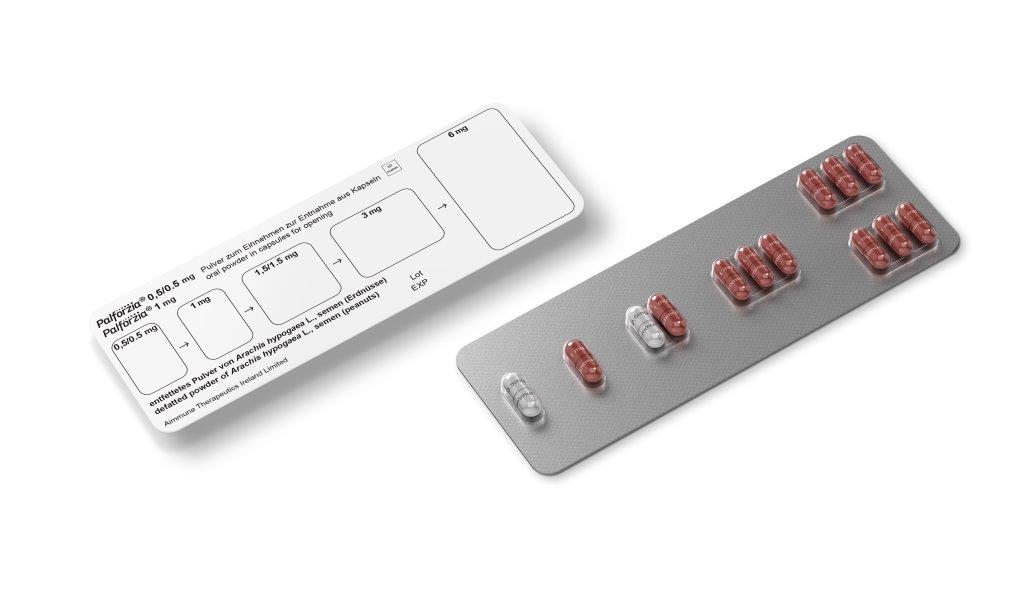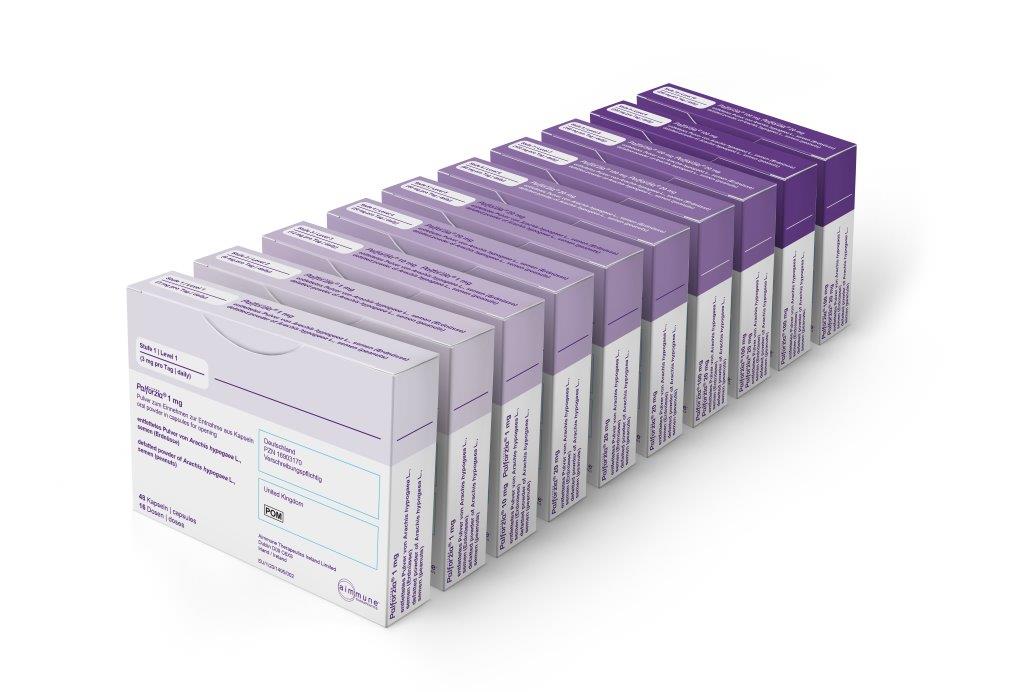**First patient started in Glasgow (January 2024)**
If you or your child has a peanut allergy, and is between 4 and 17 years old, we are pleased to offer you peanut immunotherapy with Palforzia.

Immunotherapy is the treatment of allergy by giving small, regular doses of the thing you are allergic to – so small that they do not cause a reaction – and building the dose up gradually until you no longer react to that thing.
This has been done in various forms for many kinds of allergies including bee/wasp venom, grass/tree pollen, milk and egg.
For peanut allergy, we aim to do this by adding small, precise amounts of peanut to the food your child is eating.
This is also called peanut oral induction of tolerance (OIT) – oral just means “by mouth” (because other kinds of immunotherapy are given by injection).
“Induction of tolerance” means increasing your body’s ability to tolerate the thing you are allergic to without reacting. Another word for this is desensitisation.
Click here to see why we have chosen to use Palforzia.
Is this a cure for peanut allergy?
Unfortunately, no.
The aim of this treatment is to increase the amount of peanut that is tolerated (in other words, eaten without triggering an allergic reaction). Sometimes people call this “bite protection”.
You still need to avoid peanuts, other than your regular daily dose.
If you were to eat a lot of peanut in one go, you might still react. And if you don’t continue to take your daily dose, you could go back to being allergic again – back to square one.
So what’s the point?
Increasing your tolerance of peanut reduces the risk of reaction from accidental peanut exposure. The “threshold” or amount of peanut needed to cause a reaction is higher.
That should mean less reactions, and less severe reactions.
There’s more. Your child will learn to recognise symptoms of an allergic reaction (many children don’t remember their past reaction or reactions because they were so young at the time). They will learn what to do if they do have a reaction, including treating anaphylaxis.
Even if you have not seen a reaction in a long time, studies have shown that treatment with Palforzia reduces the anxiety felt by many families due to food allergy, and reduces the social restrictions that food allergy can lead to (such as avoiding parties, buffets, family events, holidays abroad).
Click here to see more about what treatment with Palforzia is like.
Who is it not suitable for?
There are some children where treatment with Palforzia may not be suitable. This includes:
- Severe or uncontrolled asthma.
- Problems swallowing or long term problems with your digestive system including eosinophilic oesophagitis (EoE) and gastro-oesophageal reflux disease.
- Severe or life-threatening anaphylaxis within 60 days before starting treatment with Palforzia.
Click here to read why peanut immunotherapy is not available on the NHS in Scotland.
Does it work?
Approximately 70–90% of people will achieve the final maintenance dose (stage 3), which is roughly 2 peanuts. The rest stop treatment for reasons such as side effects (itching of the mouth, abdominal pain).
A small number of people will have anaphylaxis during treatment (estimated at 4%), which is why we will check you know how to treat reactions and provide you with adrenaline auto-injectors (Epipens) if you don’t have them already.
60% of people who get to stage 3 are able to eat the equivalent of 6 peanuts. Younger children appear to get a better response to treatment.
Is it for us?
Yes, if you think that being able to accidentally eat a peanut or 2 without having a reaction would make your life, and your family’s life, better!
But it does involve a lot of work – coming to appointments every 2 weeks for 3 months (although there is some flexibility), giving regular doses at home, follow up appointments.
There is also the risk of reactions to the treatment, which range from minor and annoying (itchy mouth, for example) to more significant, potentially life threatening ones. Reactions are difficult to predict.

When is the best time to start treatment?
Younger children appear to get a better response to treatment – we assume their immune systems are better able to adapt. They are probably more likely to achieve complete cure (“sustained unresponsiveness” is the jargon). They also seem less likely to get reactions to treatment.
Young children usually adapt quickly to new routines and habits, such as taking daily doses and coming to the clinic.
If you start early, you will enjoy more years of protection.
Older children tend to have more commitments to social/academic/sporting activities, which may be impacted by immunotherapy.
On the other hand, older children will better understand why and what they are doing, and can actively participate in the process.
There may be more data and research in the future about existing and new treatments.
So there is no simple answer.
Get in touch!
Click here for details about costs.
Please go to the Glasgow Private Clinic website if you wish to discuss peanut immunotherapy with us. You can phone, email or fill out the enquiry form there.

News
-
Systematic Review of Omalizumab and OIT
Italian review of 11 studies of the use of the Anti-IgE medicine Omalizumab in oral immunotherapy (OIT) – Pharmaceuticals 2025 Mar 20;18(3):437. 3 studies looked at peanut allergy. Schneider’s study looked at 13 children aged 8-16. On the first day of OIT, all passed a 500mg dose of peanut flour! Within 8 weeks, all but…
-
Omalizumab and early life OIT
Helen Brough et al review the use of the Anti-IgE antibody to improve outcomes in oral immunotherapy (OIT). [J Allergy Clin Immunol Pract 2025 Apr;13(4):731-739] To begin with though, they review data on early life (pre-school) OIT. They suggest adherence is better, which I’m not convinced about, but point out that if you start early, you…
-
Predicting remission
Article from Australia – remission is defined as being able to discontinue treatment for at least 8 weeks and still not have any reaction to peanut. This was a group of 162 children treated between the ages of 1 and 10 with peanut flour +/-probiotics, not Palforzia. The higher your peanut blood IgE level is…